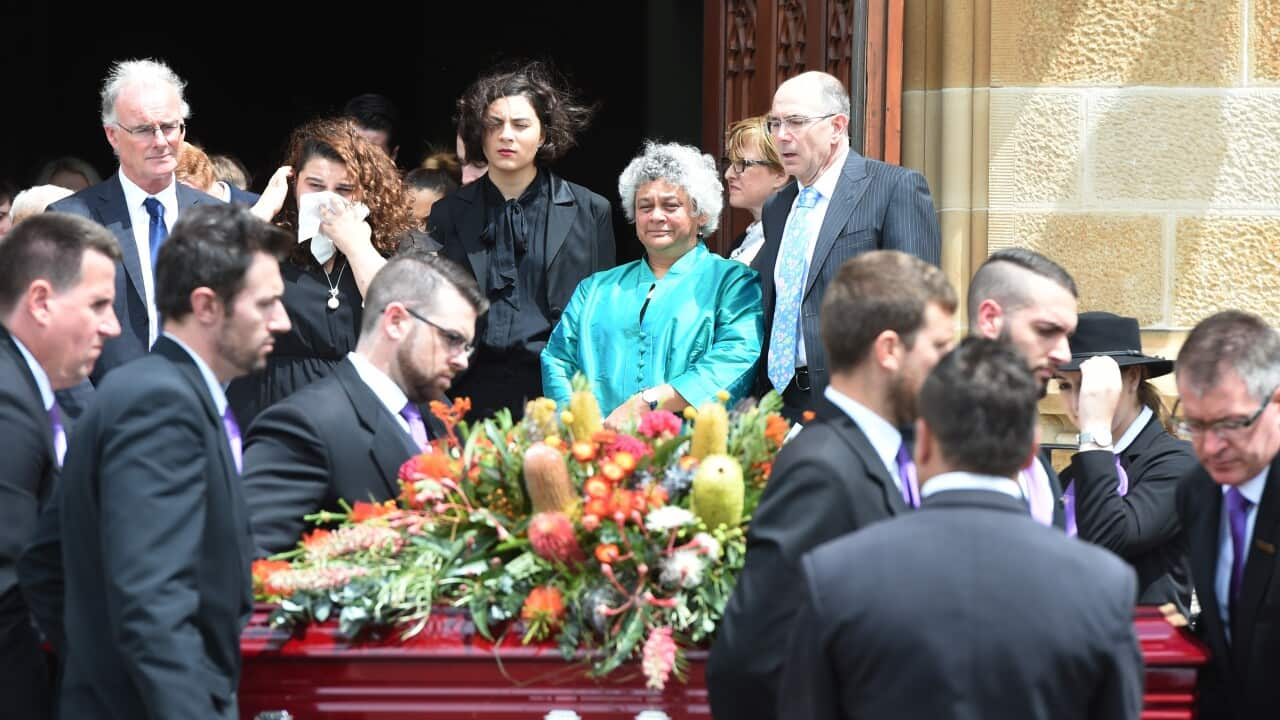Friends, family, members of parliament and distinguished guests gathered in Sydney on Tuesday to mourn Faith Bandler, a rights activist and national treasure. She was born on 23 September 1918 and died aged 96 on 13 February 2015.
A state funeral was held in the Great Hall of the University of Sydney to honour the civil rights advocate, whose legacy was her gentle approach to achieving social justice and equality in Australia.
“Because war was not how you solved things, and not how you changed the world,” said her daughter, Dr Lilon Bandler, at the funeral.
“You must do that through legislation, political activism and consciousness raising.”
Traumatised by the ill-treatment of Aboriginal Women and children during World War II, Faith Bandler set out to improve the lives of Indigenous Australians.
“She helped us all to be better people, helped us to recognise that caring for others was fundamental to our reason for being on earth, that we ought to get on with it, ought to work hard to improve the life of every single human, regardless of race or religion, gender or geography,” Lilon said.
Born to a South Sea Islander father and Indian-Scottish mother, Faith Bandler selflessly devoted much of her life to building organisations that worked for the rights of Indigenous Australians.
These included the Federal Council for the Advancement of Aborigines and Torres Strait Islanders, the Cooperative for Aborigines and Islanders, the Australian South Sea Islander United Council, the Union of Australian Women and many, many more.
The Prime Minister paid tribute to Faith Bandler’s contribution to the country at the service, saying “[Faith Bandler] received the human rights medal, was appointed a Member of the Order of Australia in 1984 and a Companion of the Order in 2009.”
But her crowning achievement was her campaign for a Constitutional referendum, which led to the 1967 referendum and two amendments regarding the rights of Indigenous Australians in the Constitution of the Commonwealth of Australia.
The first amendment regarded the power of the federal government to make laws, which previously read: “The people of any race, other than the Aboriginal race in any State, for whom it is deemed necessary to make special laws” (Commonwealth Constitution Section 51, paragraph xxvi). The clause “Other than the Aboriginal race in any State” was removed, which gave the government the ability to make laws for Indigenous Australians.
The second amendment regarded the provision in the Constitution that stated that Indigenous people would not be included in Australia’s census. The phrase "In reckoning the numbers of the people of the Commonwealth, or of a state or other part of the Commonwealth, Aboriginal natives shall not be counted", was removed (Section 127). This change was considered to help break down barriers between non-Indigenous and Indigenous Australians.
“It’s important to remember Faith didn’t work alone, and it was partly because of her collaborative style that ’67 was the success that it was. That it reached out to Australians wherever they were,” said Tanya Hosch, joint campaign director for Recognise, known as the movement to recognise Aboriginal and Torres Strait Islander peoples in the Australian Constitution.
Faith went on to focus on the rights of her own people by founding in 1974 the National Commission for Australian South Sea Islanders, which gained the Australian government’s recognition of South Sea Islander people as a “” in 1994.
“She really inspired me,” said Bonita Mabo, AO, activist for Indigenous Australians and widow of Eddie Mabo who worked for the land rights of Australia’s First Peoples. “I was so proud of her when she got up and did that for our people.”









